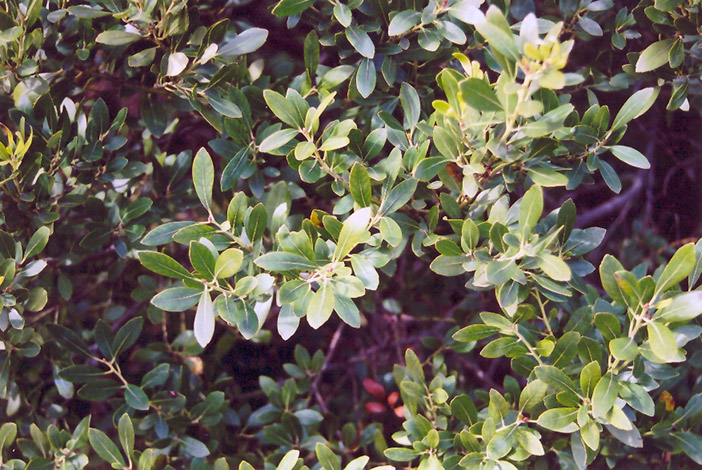PLANTFINDER
search. discover. plant.
Ivory Queen Inkberry Holly
Ilex glabra 'Ivory Queen'
Height: 6 feet
Spread: 8 feet
Sunlight:
![]()
![]()
Hardiness Zone: 5
Description:
An interesting broadleaf evergreen shrub featuring a dense, compact habit of growth with narrow dark green leaves, unique and showy white fruit sets it apart from the species; excellent choice for the garden or foundation planting, makes a good hedge
Ornamental Features
Ivory Queen Inkberry Holly has dark green evergreen foliage on a plant with a round habit of growth. The glossy narrow leaves remain dark green throughout the winter. It produces white berries from early fall to late winter.
Landscape Attributes
Ivory Queen Inkberry Holly is a dense multi-stemmed evergreen shrub with a more or less rounded form. Its average texture blends into the landscape, but can be balanced by one or two finer or coarser trees or shrubs for an effective composition.
This shrub will require occasional maintenance and upkeep, and is best pruned in late winter once the threat of extreme cold has passed. It is a good choice for attracting birds to your yard. Gardeners should be aware of the following characteristic(s) that may warrant special consideration;
- Suckering
Ivory Queen Inkberry Holly is recommended for the following landscape applications;
- Mass Planting
- Hedges/Screening
- General Garden Use
- Topiary
Planting & Growing
Ivory Queen Inkberry Holly will grow to be about 6 feet tall at maturity, with a spread of 8 feet. It tends to fill out right to the ground and therefore doesn't necessarily require facer plants in front, and is suitable for planting under power lines. It grows at a slow rate, and under ideal conditions can be expected to live for 40 years or more. This is a female variety of the species which requires a male selection of the same species growing nearby in order to set fruit.
This shrub does best in full sun to partial shade. It prefers to grow in moist to wet soil, and will even tolerate some standing water. It is very fussy about its soil conditions and must have rich, acidic soils to ensure success, and is subject to chlorosis (yellowing) of the foliage in alkaline soils. It is highly tolerant of urban pollution and will even thrive in inner city environments. Consider applying a thick mulch around the root zone in winter to protect it in exposed locations or colder microclimates. This is a selection of a native North American species.
A NetPS Plant Finder tool

